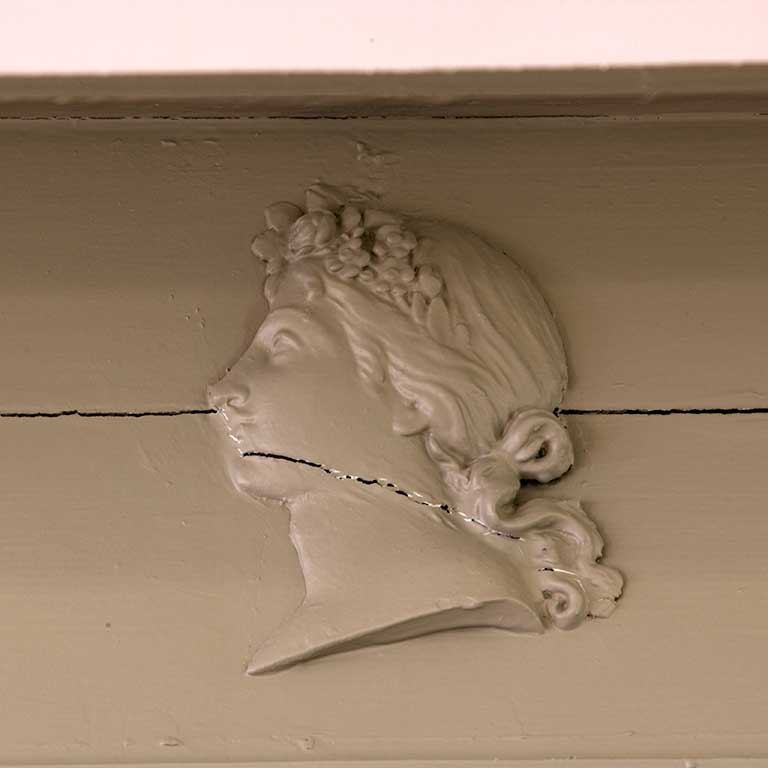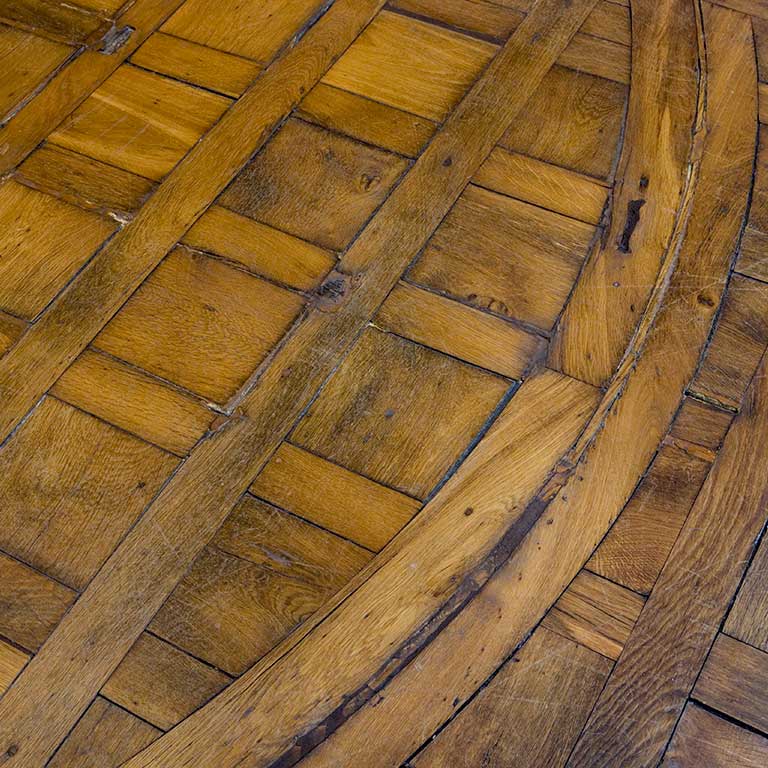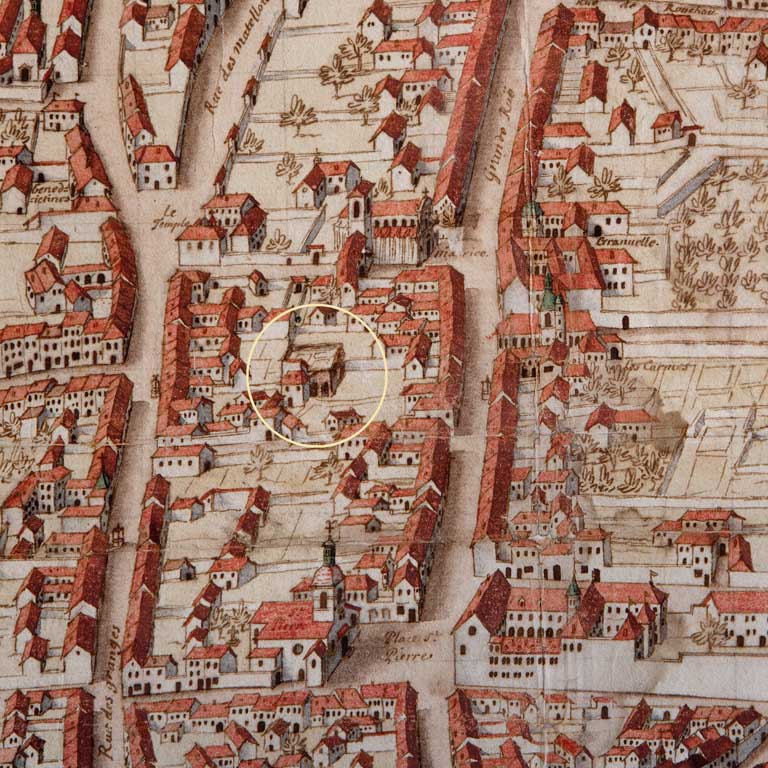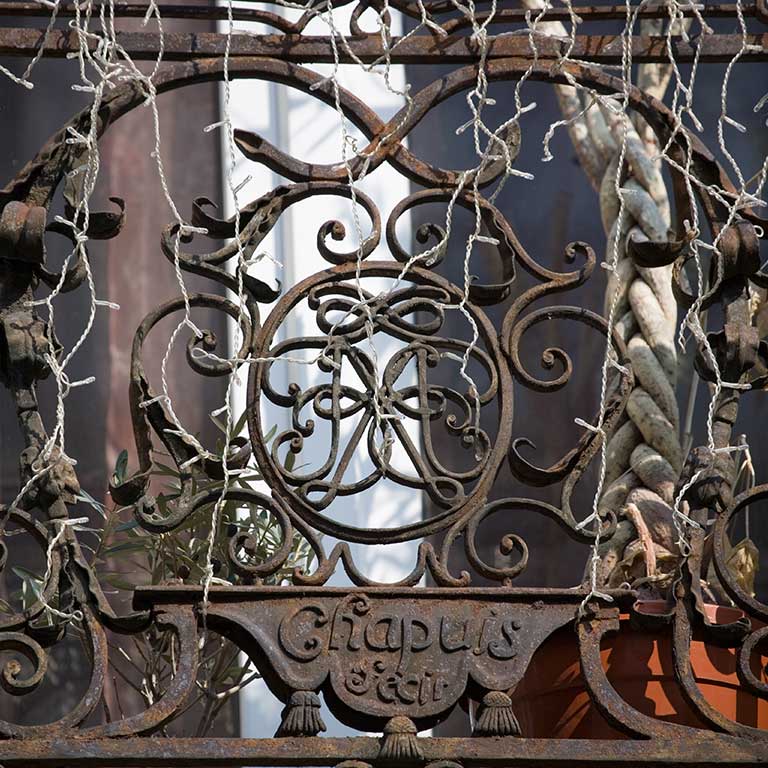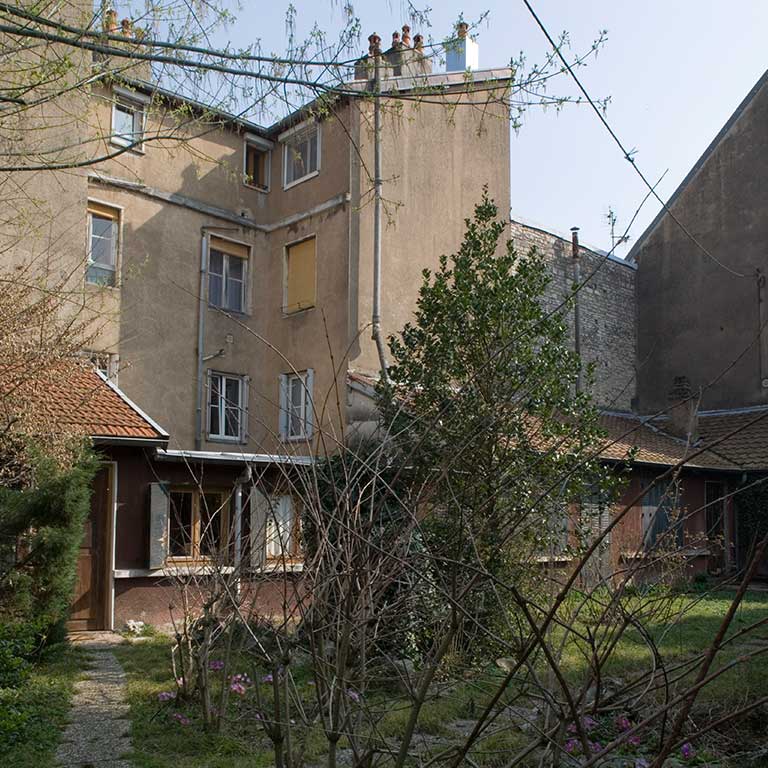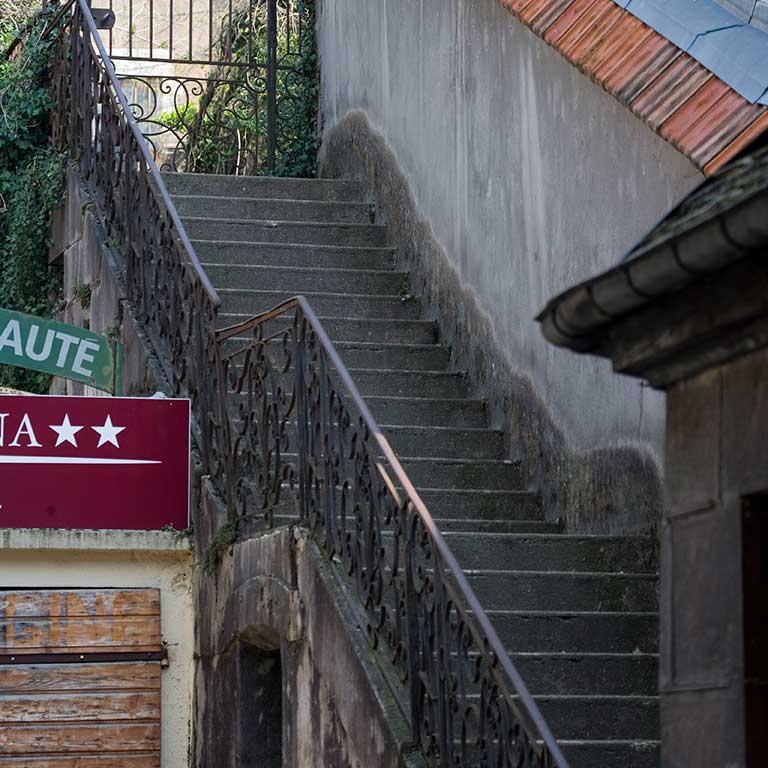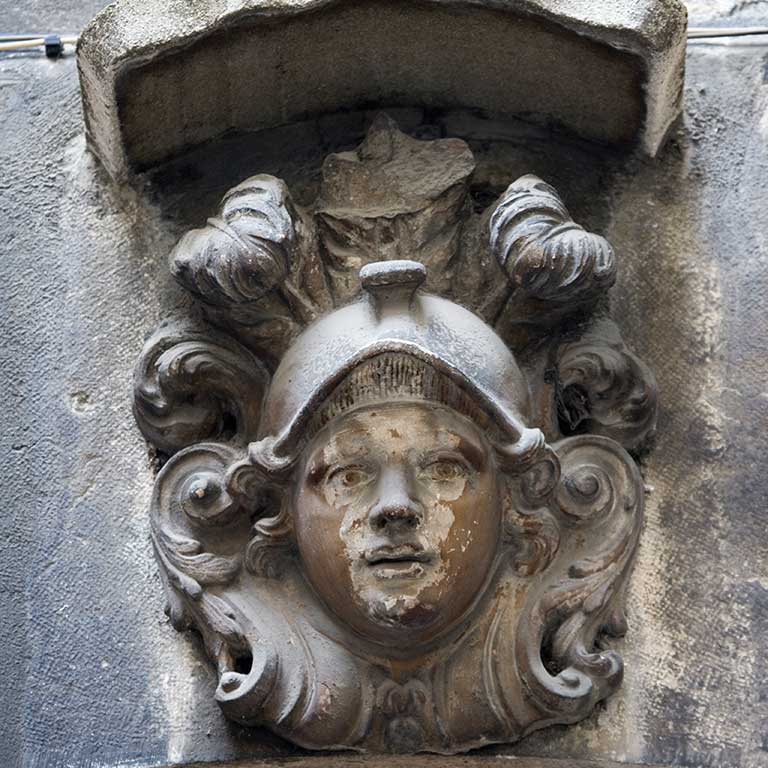Here, on a very narrow facade, you have an example of the genius of the architect, Claude-Antoine Colombot. He built this house in 1789 for Madame Dandré. The entire facade is very characteristic of Neoclassical architecture. On the ground floor the facade is rusticated and the first floor is marked by a continuous frieze using the Vitruvian wave pattern. A Palladian window, composed of a central window with an arch above it, flanked by two smaller rectangular windows, takes up the entire first floor. The flat arch is decorated with leafy branches in stucco. The window brought a flood of light into the oval first floor front room. What remains of the beautiful decor, designed by Colombot and his team of artisans, is a marble fireplace, exquisite oak flooring and some paneling. Originally, this was a three-storey home; in the 19th century, another floor was added.
Now, turn around and locate 91, Grande Rue. Here, you see the Sorans family mansion, which was built in the middle of the 18th century. The wrought iron balcony on the first floor was made by the locksmith Nicolas Chapuis. (Chapuis also designed and built the great courtyard gates in front of Saint Jacques’s Hospital in 1703.) The segmentally arched windows are decorated with carvings of faces crowned with flowers or shells.
In the 16th century, at this same location, a mansion was built for Humbert Lulier, Lord de Preigney, businessman for the Granvelle family. If you go through the carriage entrance, you will see the only things that remain from this earlier building. One is a segment of the portico to the right in the second courtyard, cemented into more recent construction. Two other columns belonging to the same portico were moved to either side of the building located at the back of the lot. This very tall building was probably an aristocratic medieval tower house. Today, it is a hotel.
To the right, it is flush against a Gallo-Roman foundation of a forum.
As you go back towards the street, in the small central courtyard , you will see the helmeted head of a man probably representing the god Mercury and a sentence in Latin, meaning “Forgive others for many things, but not yourself.”


